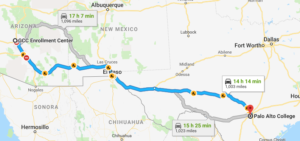I recently attended a professional development session on fostering resiliency in college students, and the presenter was definitely singing in my language. Concepts such as self-regulation and coping skills were dancing in my ears as a professor of psychology. As the session ended, however, a math professor in the group exclaimed, “I want to help, but I’m not a trained counselor!”
Her words zapped me out of my bubble, and yet I totally understood them. With rising levels of anxiety and depression among college students1, many professors want to help in any way possible. But most of us are not equipped to offer counsel, and those who are qualified understand that we cannot be therapists to our students. So what’s a college teacher to do?
For starters, we can look to our counterparts in K-12 education who are part of the Trauma-Sensitive Schooling movement. Teachers in this group understand that adverse childhood experiences often leave more than a physical mark. Indeed, post-traumatic stress disorder is seen in children who have experienced toxic stress stemming from physical, emotional, or sexual abuse, neglect in a variety of forms, and other household dysfunctions. And many of these students eventually enter our college classrooms.
Obviously K-12 teachers are no more counselors than those at the college level. However, from the Trauma-Sensitive Schooling movement emerged the idea of a set of universal teaching practices that promote inclusion for students who have experienced toxic stress. Since we can never know the inner lives of all our students, universal teaching practices are strategies used with the whole class in order to promote a sense of safety and well-being for all.
The good news is that universal teaching practices are not just one more thing to add to our lesson plans. They even don’t require specialized training. Rather, these practices are incorporated into our regular teaching routine. In this way, all college teachers regardless of subject area can help emotionally vulnerable students get the most out of their college courses.
Below is a sample of universal practices I use in my college instruction, (ripped from the pages of my previous work as a kindergarten teacher):
Predictability (limit unnecessary surprises)
For a student with ever-spiking cortisol levels, a certain level of predictability in a course can serve as a regulator. For example, one form of predictability is setting clear and consistent deadlines. In my classes, I have assignments due on the same day of the week, spread out over consistent intervals over the course. I include prompts in my lectures as the due dates draw near. I publish a course calendar that I advise students print out and “hang on their bathroom mirror.”
Another form of predictability is of the personal variety. I strive to be the same person today as I was yesterday (and will be tomorrow) for my students. I endeavor to model emotional stability for my students, some of whom come from more volatile home environments. Predictability can take many other forms in the classroom, wherever a supportive structure can be provided for students.
Acceptance (foster inclusion)
A feeling of belongingness can serve as a stress buffer in the classroom. Universal practices I use to welcome students involve getting to know their names and using them often, learning about them personally, and slowing down enough to listen to them when they have a question or want to share something. I stop whatever it is I might be doing and face them when they are speaking. When I cross a student in the hallway, I am conscious of my body language. Am I communicating receptiveness?
Another way to communicate acceptance can be found in the feedback process. The manner in which we respond to students in class discussions can communicate a sense of safety and ability to take risks. For me, this involves finding a kernel of correctness in all student contributions. For example, if a student starts talking about “Pavlov’s mice,” I can respond, “Yes! You are correct that Pavlov studied classical conditioning. It was with dogs as opposed to mice, but you’re on the right track.”
Co-regulation (share the calm)
When I sense a student is anxious in class, I model emotional regulation. In this way, I am inviting students to co-regulate with me. Co-regulation involves deepening my breath, slowing my speech, and perhaps lowering my vocal tone. It also involves avoiding co-regulating in the opposite direction; I strive to be mindful if my own anxiety level starts to raise in response to that of my student. Calming my own mind, therefore, is a critical first step.
Beyond bringing things down a notch, we can model a growth mindset with students. When an anxious student exclaims that they are just not a good reader, for example, we can share some strategies in this area. We can embrace failure as part of the learning process by sharing our own stories of when we fell and got back up.
Providing predictability, acceptance, and a sense of calm are not “add-ons” to our our already-packed curricula. To a certain degree, they are an extension of the person who is the teacher. More importantly, they are not direct clinical interventions. Rather, they are small steps we can take as college instructors to ensure the inclusion of all students in a safe, and thus productive, learning environment.
For more information on the Arizona Adverse Childhood Experiences Consortium and its Creating Trauma Sensitive AZ Schools Committee, visit https://azaces.org/
1Center for Collegiate Mental Health. (2018, January). 2017 Annual Report (Publication No. STA 18-166).
This post is part of the Write 6X6 challenge at Glendale Community College.
The post What Does It Mean to Be Trauma-Sensitive in Higher Ed? appeared first on My Love of Learning.


